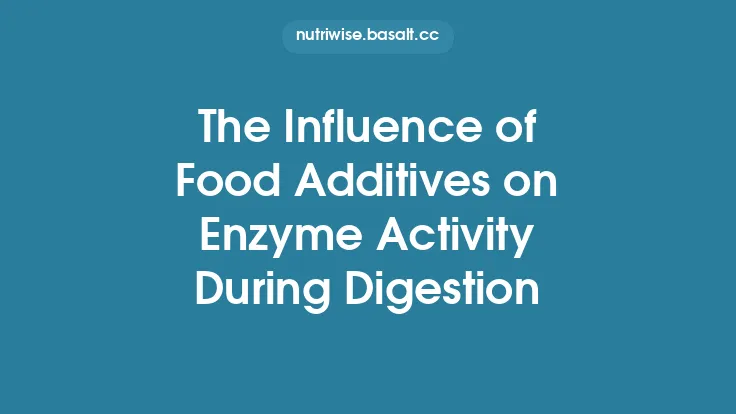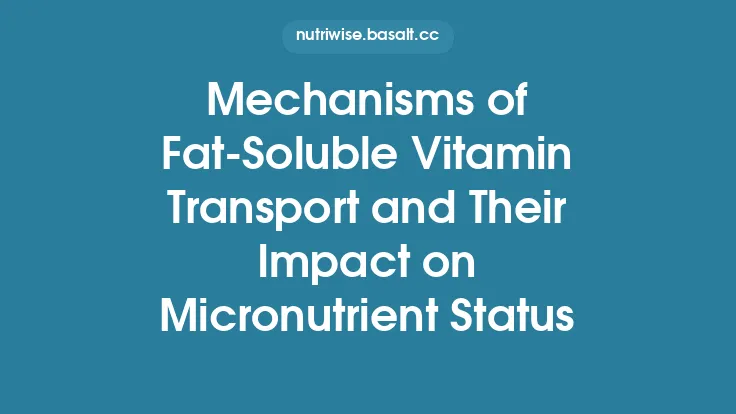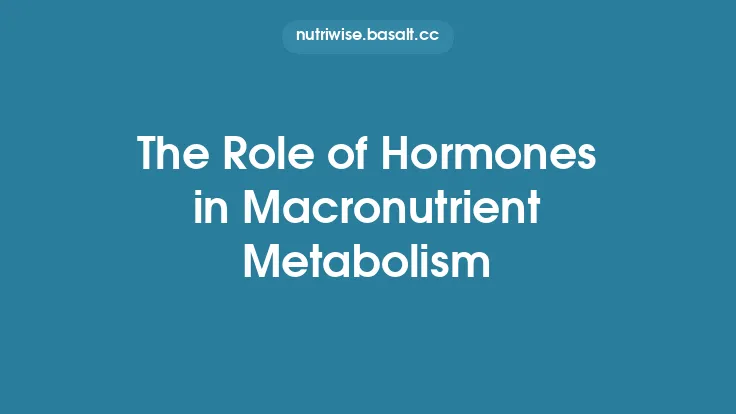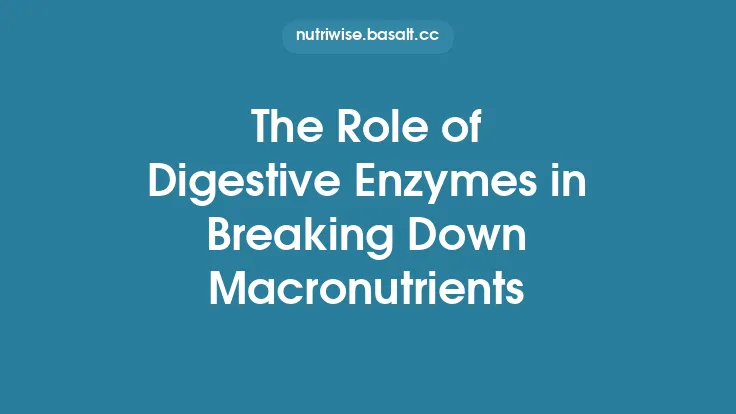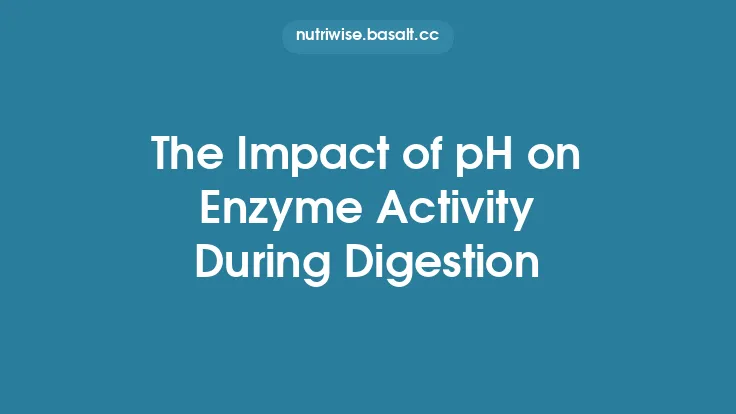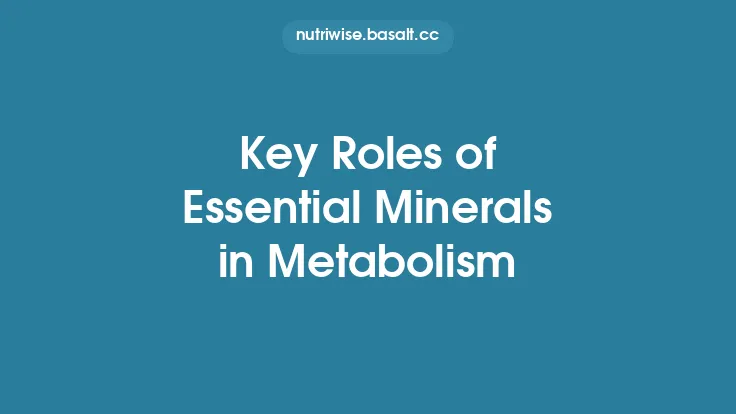The pancreas is a dual‑function organ, producing both endocrine hormones (insulin, glucagon, etc.) and a rich cocktail of digestive enzymes that are secreted into the duodenum to break down proteins, carbohydrates, and lipids. While the neural circuitry of the gut‑brain axis provides a rapid, reflexive component to exocrine output, the bulk of the stimulus for enzyme release is hormonal. Understanding how these hormones are generated, how they act on pancreatic acinar and ductal cells, and how their signals are integrated at the cellular level is essential for both basic physiology and the development of therapies for pancreatic insufficiency, chronic pancreatitis, and related metabolic disorders.
Hormonal Landscape of Pancreatic Exocrine Regulation
The exocrine pancreas is primarily responsive to three classes of gut‑derived hormones:
| Hormone | Primary Source | Main Trigger for Release | Primary Effect on the Pancreas |
|---|---|---|---|
| Cholecystokinin (CCK) | I‑cells of the duodenal and jejunal mucosa | Presence of fatty acids and partially digested proteins in the duodenum | Potent stimulation of enzyme‑rich zymogen granule exocytosis from acinar cells |
| Pancreatic Polypeptide (PP) | PP‑cells (F‑cells) of the pancreatic islets | Vagal activation, fasting, and certain nutrients | Autocrine/paracrine modulation of both enzyme secretion and pancreatic blood flow |
| Somatostatin | D‑cells of the gastric, duodenal, and pancreatic mucosa | High luminal acidity, presence of nutrients, and neural input | Inhibitory tone that dampens enzyme release, reduces bicarbonate secretion, and limits endocrine hormone output |
| Vasoactive Intestinal Peptide (VIP) | Enteric neurons and endocrine cells of the small intestine | Parasympathetic stimulation, presence of luminal nutrients | Enhances ductal secretion and synergizes with CCK to promote enzyme release |
| Neurotensin | N‑cells of the distal small intestine | Lipid‑rich meals and certain amino acids | Augments CCK‑mediated enzyme secretion and modulates pancreatic blood flow |
These hormones act in concert, with CCK providing the dominant “on” signal, while somatostatin and, to a lesser extent, PP and neurotensin fine‑tune the response. The balance among them determines the magnitude, timing, and composition of the pancreatic enzyme output.
Cholecystokinin: The Primary Stimulus for Enzyme Release
Synthesis and Release
CCK is synthesized as a preprohormone that undergoes proteolytic processing to generate several bioactive isoforms (CCK‑8, CCK‑33, etc.). The I‑cells sense luminal nutrients through a combination of G‑protein‑coupled receptors (GPCRs) and transporters:
- Fatty acids bind to GPR40 (FFAR1) and GPR120, triggering intracellular calcium rise.
- Amino acids and peptides activate the calcium‑sensing receptor (CaSR) and the peptide transporter PepT1, leading to depolarization and calcium influx.
These signals converge on the phospholipase C (PLC) pathway, producing inositol‑1,4,5‑trisphosphate (IP₃) and diacylglycerol (DAG), which raise intracellular Ca²⁺ and activate protein kinase C (PKC). The resulting exocytosis of CCK‑containing granules releases the hormone into the portal circulation.
Receptor Interaction on Acinar Cells
Acinar cells express the CCK₁ receptor (CCK₁R), a GPCR coupled primarily to Gq/11 proteins. Binding of CCK initiates:
- PLCβ activation → IP₃/DAG production
- IP₃‑mediated Ca²⁺ release from the endoplasmic reticulum (ER)
- DAG‑mediated activation of PKC isoforms (PKCα, PKCδ)
The rise in cytosolic Ca²⁺, together with PKC activity, triggers the mobilization of zymogen granules toward the apical plasma membrane. The final step—fusion of granules with the membrane—is mediated by the SNARE complex (syntaxin‑2, SNAP‑23, VAMP‑2) and regulated by the calcium sensor synaptotagmin‑1.
Dose‑Response Characteristics
CCK exhibits a steep, sigmoidal dose‑response curve for enzyme secretion, with half‑maximal stimulation (EC₅₀) occurring at plasma concentrations of ~5–10 pM. Below this threshold, basal secretion persists, maintained by low‑level vagal tone and autocrine factors. Above the EC₅₀, maximal secretion is reached within 1–2 minutes, reflecting the rapid exocytotic machinery of acinar cells.
Pancreatic Polypeptide and Autocrine/Paracrine Modulation
Origin and Release Dynamics
Pancreatic polypeptide (PP) is secreted by the F‑cells of the islets in response to:
- Vagal cholinergic activation (e.g., during the cephalic phase of digestion)
- Fasting and exercise (via sympathetic β‑adrenergic pathways)
- Specific nutrients such as glucose and fatty acids, albeit at lower potency than CCK.
PP circulates systemically but also acts locally within the pancreas.
Receptor Signaling
PP binds to the Y₄ (NPY₄) receptor on acinar and ductal cells, a Gi/o‑coupled GPCR. Activation leads to:
- Inhibition of adenylate cyclase → ↓cAMP
- Activation of inward‑rectifying K⁺ channels → hyperpolarization
- Reduced Ca²⁺ influx through voltage‑gated channels
Collectively, these effects temper the CCK‑driven secretory burst, preventing over‑exuberant enzyme release that could predispose to autodigestion.
Functional Outcomes
Experimental models demonstrate that PP administration reduces amylase and lipase output by ~20–30 % when given concurrently with CCK. This modulatory role is especially important during prolonged meals, where sustained CCK stimulation would otherwise lead to excessive pancreatic workload.
Somatostatin: The Brake on Enzyme Secretion
Sources and Stimuli
Somatostatin is produced by D‑cells scattered throughout the gastric, duodenal, and pancreatic mucosa. Its release is triggered by:
- Low pH (direct activation of acid‑sensing pathways)
- High concentrations of luminal nutrients (especially glucose)
- Neural inputs (both parasympathetic and sympathetic)
Receptor Subtypes and Intracellular Effects
Four somatostatin receptor subtypes (SSTR1–5) are expressed on acinar cells, all coupled to Gi/o proteins. Their activation leads to:
- Suppression of adenylate cyclase → ↓cAMP
- Activation of phosphotyrosine phosphatases → dephosphorylation of key signaling proteins
- Opening of K⁺ channels and closing of voltage‑gated Ca²⁺ channels
The net result is a reduction in intracellular Ca²⁺ oscillations, which are essential for granule exocytosis. Somatostatin also down‑regulates the expression of CCK₁R, providing a longer‑term inhibitory feedback.
Physiological Significance
In vivo, somatostatin infusion can blunt CCK‑induced enzyme secretion by up to 50 %. This effect safeguards the pancreas during periods of high acid load (when secretin‑driven bicarbonate secretion is also active) and during the inter‑meal interval, allowing the organ to recover.
Vasoactive Intestinal Peptide and Neurotensin: Auxiliary Regulators
Vasoactive Intestinal Peptide (VIP)
- Source: Enteric neurons and enteroendocrine cells.
- Receptor: VPAC₁/VPAC₂ (Gs‑coupled).
- Mechanism: Elevates intracellular cAMP, which synergizes with CCK‑induced Ca²⁺ signals to enhance the priming of zymogen granules. VIP also stimulates ductal bicarbonate and fluid secretion, creating an optimal luminal environment for enzyme activity.
Neurotensin
- Source: N‑cells of the distal small intestine, released in response to fatty meals.
- Receptor: Neurotensin receptor 1 (NTR₁), coupled to Gq/11.
- Mechanism: Generates modest IP₃/DAG signaling that amplifies CCK‑mediated Ca²⁺ spikes. Neurotensin also promotes pancreatic blood flow via nitric oxide (NO) production, ensuring adequate delivery of substrates and removal of secreted enzymes.
Both peptides act as “fine‑tuning” agents, enhancing the efficiency of enzyme secretion without overriding the primary CCK signal.
Intracellular Signaling Cascades Governing Enzyme Granule Exocytosis
- Calcium Mobilization
- IP₃‑mediated ER release provides the initial Ca²⁺ surge.
- Store‑Operated Calcium Entry (SOCE) via Orai1/STIM1 sustains the signal during prolonged stimulation.
- Protein Kinase C (PKC) Activation
- DAG activates conventional PKC isoforms, which phosphorylate proteins of the exocytic machinery (e.g., Munc18, SNAP‑23).
- cAMP/PKA Pathway
- While not the primary driver, cAMP potentiates secretion by phosphorylating the ryanodine receptor, facilitating Ca²⁺‑induced Ca²⁺ release (CICR).
- Small GTPases (Ras, Rho, Rab)
- Rab3D and Rab27A coordinate granule trafficking to the apical membrane.
- RhoA/ROCK signaling modulates actin remodeling, allowing granules to access the plasma membrane.
- SNARE Complex Assembly
- Syntaxin‑2, SNAP‑23, and VAMP‑2 form a tight complex that drives membrane fusion.
- Synaptotagmin‑1 acts as the Ca²⁺ sensor, ensuring that fusion occurs only when intracellular Ca²⁺ reaches a threshold (~10 µM).
Disruption at any point—whether by genetic mutation, pharmacologic inhibition, or pathological inflammation—can impair enzyme output and contribute to disease.
Gene Expression and Long‑Term Adaptations
Acute hormonal stimulation triggers rapid exocytosis, but chronic dietary patterns remodel the exocrine pancreas at the transcriptional level:
- CCK‑induced transcription of digestive enzyme genes (e.g., *PRSS1 for trypsinogen, CELA3* for elastase) via the MAPK/ERK pathway and the transcription factor CREB.
- Somatostatin‑mediated repression of these genes through NF‑κB inhibition and recruitment of histone deacetylases (HDACs).
- PP and neurotensin influence the expression of secretory granule proteins (e.g., chromogranin A) and membrane transporters (e.g., Na⁺/K⁺‑ATPase) that affect enzyme packaging and secretion efficiency.
These adaptive changes explain why high‑protein or high‑fat diets can lead to hypertrophy of the exocrine pancreas, whereas prolonged fasting results in atrophy.
Integration with Neural and Metabolic Signals
Although the focus here is hormonal, the exocrine pancreas does not operate in isolation:
- Parasympathetic (vagal) input releases acetylcholine, which synergizes with CCK by raising intracellular Ca²⁺ via muscarinic M₃ receptors.
- Sympathetic activation (norepinephrine) binds α₂‑adrenergic receptors, inhibiting adenylate cyclase and dampening enzyme secretion—mirroring somatostatin’s effect.
- Metabolic cues such as circulating glucose and free fatty acids modulate hormone release from the gut (e.g., high glucose suppresses CCK release via enteroendocrine feedback).
Thus, the final output of pancreatic enzymes reflects a composite of hormonal, neural, and metabolic information, ensuring that enzyme delivery matches the digestive load.
Clinical Implications and Therapeutic Targets
- Exocrine Pancreatic Insufficiency (EPI)
- Patients with chronic pancreatitis or cystic fibrosis often exhibit blunted CCK responses.
- Therapeutic angle: CCK analogs or CCK₁R agonists (e.g., sincalide) can be used experimentally to boost enzyme secretion, though side effects (e.g., gallbladder contraction) limit chronic use.
- Acute Pancreatitis
- Excessive CCK stimulation can precipitate premature enzyme activation.
- Therapeutic angle: Somatostatin analogs (octreotide) are employed to suppress secretory activity, reducing pancreatic workload during the acute phase.
- Pancreatic Cancer
- Overexpression of CCK₁R has been observed in certain adenocarcinomas, linking chronic CCK signaling to proliferative pathways (MAPK, PI3K/Akt).
- Therapeutic angle: CCK₁R antagonists are under investigation as adjuncts to chemotherapy.
- Obesity and Metabolic Syndrome
- While not directly addressed here, altered PP and somatostatin dynamics can influence pancreatic enzyme output, affecting nutrient absorption efficiency.
- Therapeutic angle: Modulating PP signaling may help fine‑tune post‑prandial nutrient handling.
Future Directions in Research
- Single‑Cell Transcriptomics of acinar, ductal, and islet cells under varying hormonal milieus to map cell‑type specific responses.
- CRISPR‑based editing of CCK₁R and SSTR2 in animal models to dissect the relative contributions of each receptor to enzyme secretion and disease susceptibility.
- Nanoparticle‑mediated delivery of hormone mimetics or antagonists directly to the pancreas, aiming to bypass systemic side effects.
- Systems biology models integrating hormonal, neural, and metabolic inputs to predict pancreatic output under diverse dietary patterns.
Advances in these areas will deepen our mechanistic understanding and open new avenues for treating disorders of pancreatic exocrine function.
